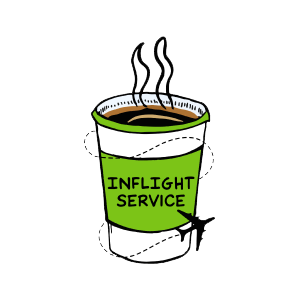Your logbook is more than a record – it’s a reflection of your professionalism. Errors in your logbook can delay your application or even lead to rejection. Here’s a quick rundown of the most common mistakes and how to avoid them:
- Unsigned Pages: Always sign your pages to verify authenticity.
- Incorrect Totals: Double-check your math and ensure totals are accurate.
- Inconsistent Records: Keep entries uniform and error-free.
- Unsuitable Comments: Avoid unprofessional or questionable remarks.
- Messy Organization: Ensure your logbook is clean, legible, and well-structured.
- Missing Entries: Log flights daily to prevent gaps in your records.
- Flight Time Errors: Use proper time conversions (e.g., 1 hour 20 minutes = 1.3 hours).
- Training Record Gaps: Keep all endorsements, reviews, and certificates documented.
Quick Fixes:
- Use blue or black ink and correct errors neatly.
- Leverage digital tools like Pilot Pathfinder or LogTen Pro for automated calculations and consistency.
- Review your logbook monthly to catch errors early.
A well-organized, accurate logbook demonstrates your attention to detail and professionalism, making it easier for hiring panels to trust your qualifications.
Most Common Logbook Mistakes That Are Killing Your Flight Hours
Missing Flight Entries
Missing flight entries can significantly impact the reliability of your logbook. Dr. O from Pattern Altitude emphasizes this point:
"The log book represents half the total value of an aircraft."
Flight Record Gaps
Incomplete flight records create serious challenges for pilots. They can disrupt the verification of total flight hours, make it harder to prove recent flight experience, and even cast doubt on your professionalism.
| Impact Area | Consequence |
|---|---|
| Total Time Verification | Difficulty confirming required flight hours |
| Currency Requirements | Challenges in proving recent experience |
| Professional Credibility | Doubts about attention to detail |
| Application Processing | Delays in verification procedures |
To avoid these problems, it’s essential to establish a habit of logging flights daily.
Daily Logging Methods
If you notice a missing flight entry, add it as soon as possible using the correct date and label it as a late entry. Be consistent in how you make corrections. The FAA provides guidance on this:
"Choosing a particular correction style (white-out, crossing out the error and correcting, crossing out the line and making a new entry, etc.) is up to the pilot."
While staying consistent with daily logging is crucial, leveraging technology can help address any occasional oversights.
Digital Recording Tools
If manual logging isn’t enough, digital tools can simplify the process. For instance, Pilot Pathfinder’s integrated logbook system automates flight tracking and securely stores your records. This ensures all flight hours are documented, which can be especially helpful for service members transitioning to civilian roles.
Flight Time Calculation Errors
Getting flight time calculations right is critical. Mistakes can lead to serious consequences, including the suspension or revocation of certificates .
Math Mistakes
Manual flight time calculations are prone to errors, especially during time conversions. A common issue arises when converting partial hours. Flight hours must be logged as tenths of an hour. For instance, 1 hour and 20 minutes should be recorded as 1.3 hours .
| Time in Minutes | Decimal Equivalent | Common Error |
|---|---|---|
| 0–3 minutes | 0.0 | Rounding up incorrectly |
| 4–9 minutes | 0.1 | Logging actual minutes instead of decimals |
| 30 minutes | 0.5 | Logging as 0.3 |
| 45 minutes | 0.8 | Logging as 0.45 |
Double-checking totals can help reduce these types of errors.
Time Total Verification
Pilots must carefully verify their flight time records. This includes comparing Hobbs and Tach readings, tracking cross-country flights separately, and properly categorizing flight hours . Here are key areas to review:
- Compare Hobbs and Tach Time: Expect up to a 20% difference between these two measurements and account for it .
- Cross-Country Flights: Ensure flights meeting distance criteria for specific certificates are logged separately .
- Special Categories: Properly log hours in categories like Pilot in Command (PIC), Solo, Second in Command (SIC), Night, and Instrument time .
These steps may seem time-consuming, but they are essential for accuracy.
Automated Calculation Tools
Digital tools can simplify the process of tracking and verifying flight times. For example, Pilot Pathfinder’s integrated logbook system automates time conversions and category tracking. Its military conversion feature is particularly helpful for service members transitioning to civilian aviation.
Some advantages of digital tools include:
- Instant flight time calculations across different categories .
- Centralized storage for easy access and verification .
Using these tools can significantly reduce the risk of calculation errors and save time.
sbb-itb-de05b1b
Poor Logbook Organization
A messy logbook can slow down reviews and hurt your application. Keeping it organized shows you’re serious about your work. Designated Pilot Examiner Natalie Bingham Hoover explains:
"When the logbook is done correctly, this can be a simple process that demonstrates both you and your instructor are well-prepared. When the logbook is a mess, however, the review can be tedious and stressful for everyone."
Inconsistent Formats
Inconsistent formatting can make the review process harder and cause avoidable delays. Here are some common issues and their effects:
| Format Issue | Impact on Application |
|---|---|
| Illegible handwriting | Slows down verification of flight hours |
| Incorrect error corrections | Raises doubts about the accuracy of records |
| Missing destination airports | Makes it hard to confirm cross-country requirements |
| Inconsistent time formats | Complicates the calculation of flight hours |
Format Standards
Clear and standardized formatting is just as important as accurate entries. To keep your logbook professional and easy to review, stick to these practices:
- Use legible handwriting and correct errors cleanly.
- Always include full details for each flight, like destination airports.
- Use the same time format throughout the logbook.
- Double-check and total all columns before your checkride.
Digital Organization Tools
Digital logbooks can help you keep everything organized and consistent. Tools like LogTen Pro (approximately $120) and Logbook Pro offer features that simplify record-keeping . For military pilots transitioning to civilian aviation, Pilot Pathfinder’s logbook system is another useful option, providing formatting standards and secure storage.
Here’s how digital tools can make a difference:
| Feature | Benefit |
|---|---|
| Automated calculations | Reduces errors in hour totals |
| Standardized formats | Keeps entries consistent and easy to read |
| Cloud backup | Protects your data from being lost |
| Military conversion | Helps adapt service records for civilian use |
Switching from paper to digital? Services like AcuLog can professionally convert your logbooks, with turnaround times typically between 3–8 weeks . Digital tools not only simplify the process but also ensure your records meet the standards required.
Missing Training Records
Keeping accurate logbooks is essential, but so is having complete training documentation to back up your qualifications. Incomplete records can hurt your airline application, as FAA regulations require all training and aeronautical experience to be properly documented .
Certification Gaps
Missing training records can create issues by leaving your qualifications unverified. Common gaps include:
| Documentation Gap | Impact on Application |
|---|---|
| Missing instructor endorsements | Delays in certificate verification |
| Incomplete training descriptions | Questions about qualification validity |
| Undocumented flight reviews | Concerns about currency |
| Lost training certificates | Time-consuming reconstruction |
Steps to Organize Training Documentation
To avoid these issues, follow these steps to keep your training records complete:
- Record training details immediately, including:
- Lesson length
- Description of the training
- Instructor’s signature and certificate number
- Instructor’s certificate expiration date
- Keep supporting documents, such as:
- Aircraft logbooks
- Training certificates
- Flight review endorsements
- Proficiency check records
- Any other documents needed to verify your qualifications and currency
Military Record Conversion
Military pilots often encounter challenges when converting their training records for civilian airline applications. United Airlines, for instance, advises:
"Enter military flight hours as they appear in your logbook / flying records" .
To ensure an accurate military-to-civilian conversion:
| Military Record Type | Conversion Method | Documentation Required |
|---|---|---|
| Flight Hours | Add 0.2–0.3 per sortie | Original military logs |
| Squadron Duties | Document chronologically | Officer performance reports |
Tools like Pilot Pathfinder’s military conversion feature can simplify the process. It automatically converts military hours while ensuring accuracy and provides secure storage for your training records, making them accessible and formatted correctly for airline applications.
Conclusion
Keeping accurate and well-organized logbooks is crucial when applying to airlines. Regular reviews and using digital tools can help avoid mistakes that might delay your application.
Monthly Record Reviews
Going through your logbook every month can help you spot issues like miscalculations or missing information. Pay attention to these areas during your review:
| Aspect | Checks | Common Issues |
|---|---|---|
| Time Calculations | Compare totals in electronic and paper logs | Errors in single or multi-engine time calculations |
| Documentation | Ensure all endorsements and signatures are present | Missing instructor credentials or dates |
| Entry Format | Check ink color and corrections | Non-standard corrections or hard-to-read entries |
| Comments | Verify flight details and routes | Missing approach or route information |
When correcting mistakes, cross them out neatly and add the correct information. These manual checks work well alongside digital tools for maintaining accuracy.
Digital Tools for Accuracy
Digital logbooks can minimize human error and simplify record-keeping. They provide automated calculations, consistent formatting, and secure storage, helping your records stay accurate and meet regulatory requirements.
To make your application process smoother, consider marking key flights and milestones in your logbook. This approach combines the efficiency of digital tools with the dependability of traditional records.




